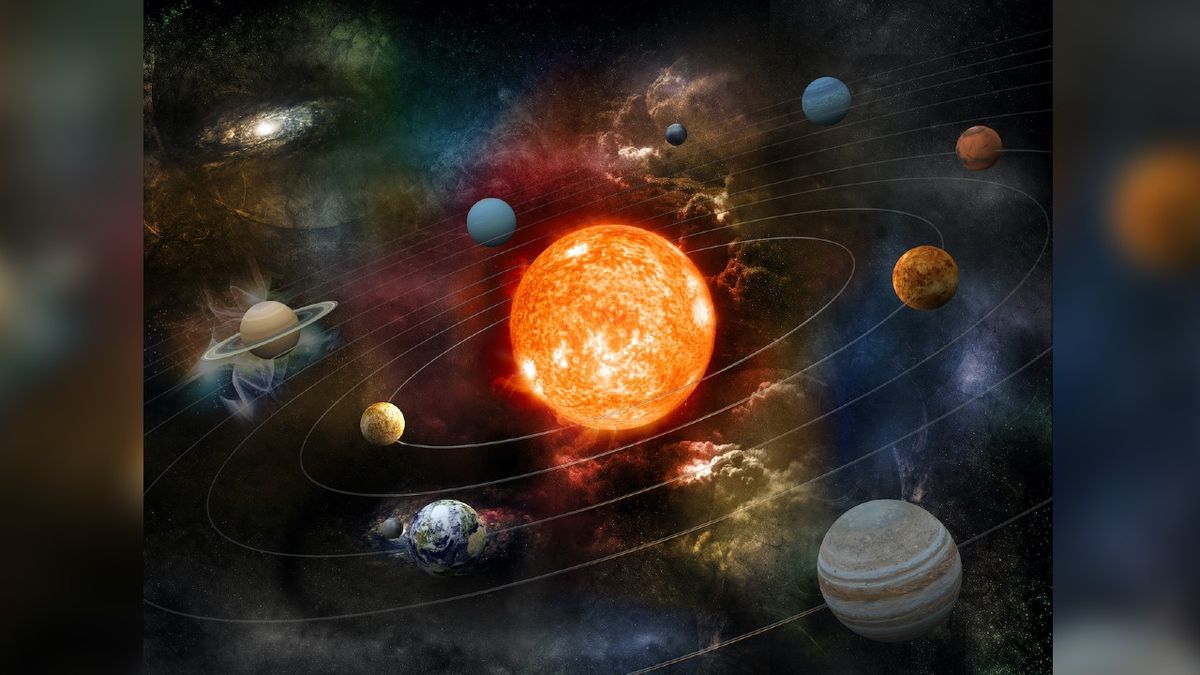Planetary alignment has captivated the curiosity of astronomers and stargazers for centuries, prompting us to wonder how often our neighboring planets line up in the vast cosmic ballet. The exquisite phenomenon of planets aligning in our solar system offers a visual treat, showcasing the harmonious dance of celestial bodies. But how often do planets line up in such a mesmerizing way? This blog delves into the intricate patterns and frequencies of planetary alignments, unraveling the mysteries of their cosmic synchronization. Join us on a journey through the cosmos as we explore the fascinating occurrences of planetary alignment and uncover the scientific marvels behind these celestial events.
9/1… Wright Shredder… Bank On That…
(produced by @thesselonious)#GetAligned pic.twitter.com/vtWpUomhii— Planetary Alignment (@P_A_Music) August 27, 2017
Introduction to Planetary Alignment
Planetary alignment refers to the rare phenomenon where celestial bodies such as planets, moons, and stars appear to line up in the sky from our perspective on Earth. This alignment is not just a visual spectacle but can also have significant astronomical implications. While planets constantly move in their orbits, aligning in a precise configuration is captivating for astronomers and skywatchers.
The Significance of Planetary Alignment
Planetary alignment provides astronomers valuable insights into the gravitational forces in our solar system. It can also help in studying planetary orbits’ dynamics and understanding celestial mechanics’ principles. Moreover, planetary alignments often coincide with other astronomical events, adding to the fascination of stargazers and researchers.
Frequency of Planetary Alignments
While planetary alignments are visually striking, they are relatively rare due to the complex movements of celestial bodies. The alignment of planets such as Venus, Mars, and Jupiter occurs at intervals of several years. However, the exact frequency of planetary alignments depends on the specific configuration of the planets and their orbits.
Despite their rarity, planetary alignments have been observed throughout history, inspiring awe and curiosity among those who gaze at the night sky. These events serve as reminders of the grandeur and precision of the cosmos, showcasing the intricate dance of celestial bodies in the vastness of space.

Why Planetary Alignment Matters
Planetary alignment is a captivating phenomenon that occurs when planets line up in the cosmos. It is a rare and visually stunning celestial event. Planetary alignment holds significance in astronomy, astrology, and even mythology, contributing to our understanding of the universe’s intricate workings.
The Scientific Significance
When planets align, scientists have a unique opportunity to study gravitational interactions, orbits, and planetary dynamics. These alignments offer unprecedented insights into the formation and evolution of our solar system.
The Astrological Implications
Astrologically, planetary alignment is believed to influence personal traits, relationships, and global events. Astrologers associate these alignments with shifts in energy, which powerfully affect different zodiac signs and their characteristics.

Frequency of Planetary Alignments
Planetary alignments are a rare and fascinating phenomenon in the cosmos. The frequency of how often planets line up varies depending on their orbits and relative positions.
Factors Affecting Alignment Frequency
The frequency of planetary alignments is influenced by several factors, such as the speed of each planet’s orbit, the inclination of its orbits, and its distances from each other.
Planets with faster orbits are more likely to align frequently than those with slower orbits. Additionally, planets that orbit on a similar plane are more likely to align than those with inclined orbits.
Patterns in Planetary Alignments
Despite the seemingly chaotic nature of planetary motion, astronomers have identified certain patterns in planetary alignments. For example, some alignments occur in cycles, where planets regularly line up in a particular configuration.
These patterns can be predicted using mathematical models and computer simulations, allowing scientists to anticipate future planetary alignments.

Fascinating Facts about Planetary Line-Ups
Planetary line-ups occur when multiple planets align in the sky, creating a mesmerizing celestial phenomenon. These cosmic events are relatively rare and captivate both astronomers and stargazers alike.
Alignment Frequency
Planetary line-ups do not happen frequently due to the planets’ differing orbital speeds and inclinations. The question “How often do planets line up?” has intrigued many scientists, leading to detailed studies and observations.
While some planets may align yearly, rare line-ups involving multiple planets in precise positions are considered once-in-a-lifetime events. Each alignment offers a unique opportunity to witness the grandeur of our solar system.
Cosmic Symmetry
When planets line up, they create a visual symmetry that showcases the harmonious dance of celestial bodies in space. This alignment provides astronomers with valuable insights into planetary movements and gravitational interactions.
- Positional Astronomy: Observing planetary line-ups helps astronomers refine their understanding of orbital mechanics and planetary positions.
- Astrophotography Opportunities: Planet alignments offer stunning photo opportunities for astrophotographers to capture the beauty of the night sky.
Historical Perspectives on Planetary Alignments
Throughout history, humans have been fascinated by the alignment of planets in the cosmos. Ancient civilizations, such as the Mayans and Egyptians, closely observed and recorded the positions of celestial bodies. These observations were often intertwined with religious or cultural significance, with alignments believed to influence human events or signify divine messages.
Ancient Observations
Ancient civilizations, like the Babylonians, meticulously tracked planetary movements, attributing celestial alignments to omens and prophecies. Planetary alignments like Jupiter and Saturn were considered significant in predicting important social and political events.
Mayan Astronomy
The Mayans had a sophisticated understanding of planetary alignments, creating intricate calendars that accurately predicted celestial events. Their temples and pyramids were designed to align with specific planets during solstices and equinoxes, showcasing their advanced astronomical knowledge.
Medieval Astrology
During the Middle Ages, planetary alignments were often interpreted through the lens of astrology. Astrologers believed that planetary positions at the time of a person’s birth could influence their personality and fate. Alignments were thought to hold clues to future events and societal changes.
Impact of Planetary Alignments on Earth
Planetary alignments refer to the positioning of planets in relation to one another in the solar system. These rare cosmic events have fascinated scientists and astronomers for centuries, raising questions about their potential impact on Earth.
The Influence on Earth’s Atmosphere
During planetary alignments, the gravitational forces exerted by the celestial bodies can slightly affect Earth’s atmosphere. This phenomenon may lead to minor weather patterns and tides disruptions, although significant impacts are rare. Such occurrences remind us of our universe’s intricate dance of celestial bodies.
Potential for Geomagnetic Activity
Some studies suggest that certain planetary alignments might contribute to increased geomagnetic activity on Earth. This could potentially lead to stronger auroras and temporary disturbances in the magnetosphere. Monitoring such events can provide valuable insights into the interaction between celestial bodies and our planet.
- Geomagnetic storms
- Auroras in polar regions
- Magnetosphere fluctuations
Frequently Asked Questions
- What is planetary alignment?
- Planetary alignment refers to the event where multiple planets come into a specific position in the sky, typically along the same path or plane as observed from Earth.
- How often do planets align in the cosmos?
- The frequency of planetary alignment varies based on the specific configuration of planets and their orbits. Some alignments are more common every few years, while others are rarer and can take decades or even longer.
- What causes planetary alignment?
- Planetary alignment occurs due to the gravitational forces between the planets as they orbit the Sun. These gravitational interactions can cause the planets to align so that their paths intersect or appear close together from our perspective on Earth.
- Are there any significant effects of planetary alignment on Earth?
- While planetary alignment can be a visually striking, it has no proven direct effects on Earth or its inhabitants. It is primarily an astronomical phenomenon that showcases the motions and positions of different celestial bodies in our solar system.
- Can planetary alignment be predicted?
- With advances in astronomical calculations and technology, scientists can predict planetary alignments with a high degree of accuracy. This allows astronomers and enthusiasts to anticipate and observe these celestial events in advance.
Exploring the Mysteries of Planetary Alignment: Closing Thoughts
In conclusion, the phenomenon of planetary alignment is a rare and captivating event that mystifies astronomers and stargazers alike. While the exact frequency of planets lining up in the cosmos varies, it is clear that such occurrences offer us a glimpse into the beauty and complexity of our universe.
Studying the patterns of planetary alignment helps us gain a deeper understanding of celestial mechanics and the interconnected nature of our solar system. It reminds us of the awe-inspiring dance of the planets as they move through the vast expanse of space.
So, keep an eye on the night sky. You never know when the planets might align again, offering a spectacle that continues to inspire wonder and curiosity in all who gaze upon it.




